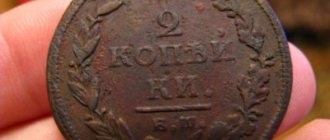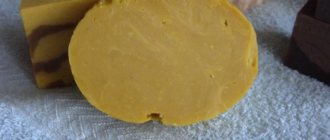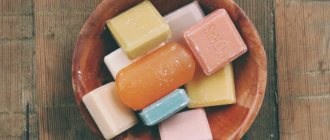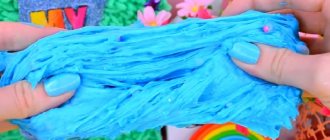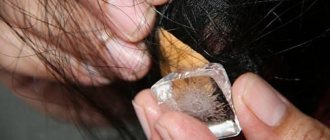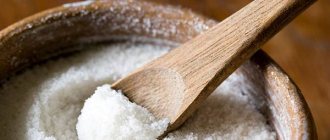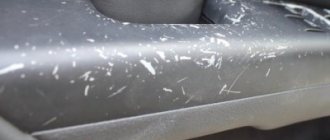How to make soap from soap remnants: Pexels Do small pieces remain after using solid soap? It’s inconvenient to use them, but it’s a pity to throw them away? Turn them into a new bar of sanitary product. We'll show you how to make soap from soap remnants at home.
How to use leftover soap
We use soap to wash our hands, do laundry or wash dishes. When a bar of soap becomes thin, flat and brittle, it becomes impossible or simply inconvenient to use. Practical housewives are in no hurry to throw away remnants, but come up with new ways to use them:
- The most popular move is to attach a soap remnant to the new soap. To do this, both pieces need to be wet and connected to each other.
After two or three uses, the soap remnant is firmly imprinted into a new piece of soap and is completely consumed. - Needlewomen use soap in cutting sewing. But not every woman is engaged in sewing, and even one piece of soap will be enough for this task for a long time.
The soap leaves clear lines necessary for cutting, is easily washed off, and leaves no traces - Several remnants of soap can be placed in a stocking or fishnet, tie a knot and use the resulting bag of soap for laundry, washing dishes, instead of a washcloth. The same bag can be hung near the street washstand in the garden: the soap will not be lost, it will dry out and will always be at hand.
Soaps folded into a similar bag will become convenient for use. - Leftover scented soap can be placed in the linen closet between stacks of bedding or clothing. Items that have been left unused for a long time will have a pleasant aroma instead of a musty smell.
Place scented bars of soap between piles to protect against the unpleasant smell of stale items. - Remnants will help decorate windows: in winter, you can use them to glue snowflakes and other New Year paraphernalia to the windows; they will also help secure the lace tulle to the glass.
Tulle glued to the glass will help limit the view from the street, protect from the sun or decorate the window - To insulate windows, you need to soak pieces of fabric in soapy water and seal the cracks.
The soap will reliably stick the fabric to the surface of the window, leave no marks and can be easily removed - If the zipper on your clothing gets stuck, you can lubricate the zipper with dry soap.
A zipper coated with soap is easier to close. - Poorly moving desk drawers can be lubricated with soap to improve sliding.
You can lubricate the wooden grooves along which the box moves with soap. - From the remnants you can make a new full-fledged bar of soap.
From old bars of soap you can make new bars with various useful additives
Making liquid soap from soap remnants
In order to make soap from soap remnants, you need to accumulate soap residues for some time. It is best to allocate a jar or other container for this. When the vessel with remnants is filled, you can begin making.
Handmade soap can be given as a small gift to friends and loved ones
Making your own soap has many positive aspects:
- waste-free use of soap;
- soap made from remnants will save the family budget;
- this activity will provide an opportunity to engage in creativity, since here you can show your imagination in additives, shapes and colors;
- the process will distract you from everyday worries and problems;
- soap making can become a favorite pastime;
- the resulting product will please all family members, and even if the final result is far from expected, the soap will still be suitable for use;
How to make liquid soap without cooking
New soap does not necessarily need to be made solid; if desired, liquid soap can be obtained from soap remnants. And if you add various useful components to it, the resulting product can be used instead of shower gel.
To make liquid soap you will need:
- fine grater
- case with dispenser,
- glycerin (sold at the pharmacy),
- lemon juice,
- hot water,
- non-solid additives (essential oil, milk, honey).
For soap making, it is better to buy a separate grater or wash the kitchen one well so that soap particles do not get into the food
Lemon juice is added as a preservative when using natural ingredients. Otherwise, the soap will quickly deteriorate. Lemon juice can replace bay leaf oil, vitamin E oil.
The recipe for making liquid soap is very simple:
- You need to grate the soap on a fine grater.
The smaller the resulting soap shavings, the sooner they will dissolve in water. - Pour a capful of glycerin and lemon juice into a container for future liquid soap. There are no specific proportions; usually, 1 tablespoon of glycerin is added to 1 liter of finished soap.
Glycerin is added to soap to soften the skin - Place the grated crumbs into the case. The bottle should be 2/3 filled with soap shavings.
If your case is opaque, then you can make soap in a jar and then pour it into a dispenser - Pour boiling water over the crumbs. Water can be replaced with herbal decoction. Leave some space if you plan to apply additives.
- Close the bottle tightly with the lid.
- Shake the container vigorously.
- Leave until completely dissolved, shaking occasionally. The process may take several days.
- When the soap shavings are completely dissolved, you can add a few drops of aromatic essential oil or liquid honey. If you plan to add milk, then it should be half the mass of soap crumbs. For example, for 5 level tablespoons of chips you need 2.5 tablespoons of milk.
All additives for liquid soap must also have a liquid consistency. - Shake everything well.
- The soap is ready for use.
To 100 grams of liquid soap you can add no more than 1/3 teaspoon of essential oil, 5-7 drops of lemon juice, 30 grams of honey.
When trying to improve the quality of a new soap, it is important not to overdo it. All additional ingredients should not be added to one bottle. This will only ruin the final product. Everything should have its own measure: if you want to supplement liquid soap with milk, then just add a little honey to it. You can combine 2-3 essential oils, in which case you don’t need to add anything else. It must be remembered that an excessive amount of oils can provoke an allergic reaction, and the soap will not foam. Soap based on a decoction of herbs will itself have useful components, so other additives will be unnecessary.
Video: making liquid soap from soap remnants
A simple recipe for making liquid soap from soap remnants
To turn small pieces of soap into a full-fledged bar, you can use one of the simplest recipes with the addition of mint.
For production you will need:
- 100 grams of soap,
- water 50–60 ml,
- 1 teaspoon mint leaves,
- a cap of glycerin,
- lemon juice (5–7 drops).
Preparation:
- We grind the soap on a grater.
- Pour mint leaves with hot water.
- Bring to a boil, turn off, cover with a lid.
- After 1-2 hours, reheat until boiling begins and pour in soap shavings.
- If necessary, you can add water.
- Stir and leave for about 30–40 minutes.
- Add glycerin and lemon juice.
- Mix everything well and pour into a container with a dispenser.
- When the shavings are completely dissolved, use the soap.
- You can store the new soap, but the bottle cap must be tightly closed.
For household needs, instead of additives, you can add baking soda to liquid soap (1 teaspoon per 0.5 ml of soap) and wash dishes with this product. And if you also put 1 tablespoon of mustard there, the soap will wash away the grease.
Various additives
If you want to make a scrub soap, just add coffee grounds to it to get the desired result. By adding cocoa, beets or coffee, you can dye the soap in different colors, which will make its appearance even more attractive, while the composition is harmless.
We suggest you read: How to properly clean a coat at home? How to clean leather, cashmere, wool and drape coats?
Soap recipes from soap will help you not only save money, but also make soap that is ideal for your skin type.
Making solid soap from soap remnants
It’s also easy to make new bars of soap from remnants.
Preparing solid soap in a water bath
The water bath is used not only in soap making, but also in cooking, as well as in making candles. Exposure to steam avoids burning, excessive evaporation and allows the product to be sterilized. In a water bath, the soap is gradually melted, reaching the desired consistency.
Experienced soap makers use special dishes for a water bath, but in fact this is not at all necessary. It is enough to prepare two heat-resistant vessels of different sizes so that one can fit in the other. A regular saucepan and glass container will do just fine.
Any pan is suitable as the bottom for a water bath, and for the upper part of the structure you can use a glass, plastic, ceramic or enamel vessel
For a water bath, soap can also be placed in a thick plastic bucket, but in this case, a textile kitchen napkin should be placed on the bottom of the lower pan.
Required items:
- water bath dishes,
- grater,
- remnants,
- water,
- additives,
- soap containers,
- oil for lubricating containers.
When all the necessary items are at hand, it’s time to start preparing:
- Rub the soap on a fine grater. You can cut it into small pieces, but then the pieces will take much longer to melt and the process will be delayed.
The combination of remnants of different colors can give an unexpected result, so it is better to melt them separately - When the soap is crushed, put a pan of water on the fire and bring to a boil.
- We install the upper bowl with soap shavings.
If the top bowl of the water bath comes into contact with boiling water, the soap will melt faster, so you should stir the soap more often and monitor the temperature more closely - Melt the soap, stirring occasionally. Don't let the soap boil! The optimal soap temperature during melting is +80°C.
- While the contents of the top are melting, grease the soap molds with oil. This will make it easier to remove the soap after it has hardened.
To make solid soap, you can use any containers, including children's sandbox molds - When 90% of the soap shavings have melted and only a small amount of crumbs remain, remove the vessel from the water bath.
The choice of soap additives depends on the personal preferences of the manufacturer, and the ability to combine them comes with experience - Pour hot soap into molds.
- Leave in a cool place until hardened. Do not dry soap in the sun.
- Remove the solid soap from the molds.
To make the soap easier to remove, place the mold in hot water for a few seconds. - Wrap in plastic film.
Ready-made soap should be stored wrapped in film to avoid overdrying and deformation. - We put it away for storage.
The drying time of the soap and its quality depend on the amount of added water, the ingredients and the composition of the soap from which the new pieces were made. The ability to properly prepare soap comes with experience, so practice and the results will follow!
Video: how to make soap from soap remnants in a water bath
Melting soap over gas and in the microwave
Some soap makers find using a water bath too long and tedious, so they prefer to melt soap using gas. This method will require some skill, which comes with practice. When using gas, hold the pan with powdered soap over the fire at a distance of 3–5 cm, stirring vigorously and preventing burning.
If you are new to soap making, then it is better to abandon the idea of melting soap on gas, since there is a possibility of getting burned by hot soap, hot utensils and open flames.
The method using gas is indeed faster, but not the safest and most convenient: during the procedure, you can accidentally drop a container of hot soap and get burned, and holding the container and stirring at the same time is not very comfortable.
If it is not possible to organize a water bath, and you do not want to use gas because of possible dangers, then using a microwave oven can easily replace both options. Everything is very simple:
- A cup (of course, non-metallic) with grated soap is filled with hot water and placed in the microwave for 15 seconds.
- After turning off the oven, remove the cup and stir the mixture well.
- Microwave the soap again for 15 seconds.
- Repeat the procedure until the soap is completely dissolved in water.
An example of making solid soap from soap remnants
Pieces of old soap can simply be melted down and poured into molds, or you can show your imagination and get creative. Much depends on the number of remnants, their color and the desire to turn your ideas into reality.
How to make soap pie
For beginner soap makers, such an interesting and simple option as soap pie is suitable.
Photo gallery: options for making a pie from remnants
The easiest way to make a soap cake can be tried by both beginners and experienced soap makers.
The brighter and more varied the pieces of old soap are, the more visually the new soap will turn out
Soap pie fillings can be used in a wide variety of shapes and colors.
So, let's prepare a soap pie. For this you will need:
- soap remnants of different colors, if the soap remnants have a pale color scheme, then you can enrich it with the help of food coloring;
- container for the final product;
- alcohol in a spray bottle;
- all items used to melt soap (see above).
The easiest recipe for making soap pie:
- Cut the colored soap into pieces of different sizes.
- Melt neutral-colored soap using one of the above methods.
- Cool the resulting liquid soap until slightly thickened.
- Place the colored pieces - the filling of the pie - into a greased container.
- Sprinkle these pieces with alcohol.
- Pour melted soap over the colored scraps. The filling should not be hot, otherwise it will melt the colored filling.
- Apply a little alcohol again to the surface of the cake.
For alcohol, you can use a bottle with a spray from old cosmetic products: lotions, styling products, decolons.
Alcohol is needed in order to avoid the appearance of air bubbles, which certainly form on the surface of the soap after pouring. Soap not treated with alcohol looks unsightly, so if this substance is not used, the soap will lose its aesthetic appearance.
Free sale of pure alcohol is prohibited by law. But vodka or salicylic alcohol will not work. You can use formic or boric alcohol.
If desired, the colored components of the cake can be melted separately and poured into small containers of various shapes. In this case, the appearance of the soap will be more interesting, but the manufacturing process will require a significant amount of time.
How to make scrub soap from soap remnants
The scrub is used in cosmetology to soften the skin, remove dead cells, enhance the massage effect and blood flow. If you combine a scrub with soap, you can cleanse your skin and take care of it at the same time. Soap with added solid particles will have a scrubbing effect.
The easiest way to make scrub soap with oatmeal:
- Pour soap shavings with a small amount of water so that the finished mixture turns out like plasticine. At the same time, not all crumbs can completely dissolve, and the better the scrub soap will be.
- Add glycerin and oatmeal to the resulting mass (30 g per 100 g of soap).
Oatmeal added to soap has an anti-inflammatory effect and also makes the skin soft and velvety. - Mix everything by hand.
- Drizzle lemon juice. Mix again.
- Form soap balls or bars from the finished mixture.
- Dry in the shade until completely cooked.
Soap with a scrub effect will help remove dead epithelial cells and make the skin smooth
Instead of flakes, you can add ground coffee or its whole beans, a ready-made cosmetic scrub, sea salt, crushed cereal (corn, barley, etc.). The main thing is not to overdo it with additives, otherwise the soap will crumble. The use of cereal products will make the soap very harsh, it can scratch the delicate skin of a child or hand. It is best used to exfoliate the skin of the feet.
What tools are needed?
The soap will moisturize, nourish the skin or scrub.
Special molds will help give the soap an interesting or unusual appearance. The soap will harden in them.
Commonly used:
- Old silicone baking utensils.
- Children's molds for making Easter cakes.
- Special containers for soap making.
They should be made of silicone, rubber, plastic.
Particularly popular forms are:
- colors;
- animals;
- geometric shapes.
It all depends on the capabilities and imagination of the person making homemade soap. As a result, the finished product has an unusual shape.
Other ways to use soap remnants
Imagination and practicality can expand ideas about the use of simple remnants. For example, you can use them to make bubble bath or soap bubbles.
Bath foam from soap remnants
Fans of foam baths can use soap instead of expensive products. You can add a few drops of essential oils (see the instructions for the oil for the exact amount), throw dried rose petals into the bath, or light candles. A pleasant, relaxing environment will help relieve fatigue and switch from work.
Homemade foam from soap remnants must be washed off after taking a bath
An example of making bath foam:
- Prepare liquid soap from the remnants.
- Add glycerin.
- Pour in 1 teaspoon of liquid honey.
- Stir gently for a few minutes to evenly distribute the ingredients.
- Avoid foam formation.
- Pour the soap into a container with a screw-on lid.
- Shake before use.
Soap for foam should be prepared in small portions so that the finished product is quickly consumed and does not have time to deteriorate.
Soap bubbles from soap remnants
All children love to blow bubbles. So why not try making them from a bunch of unwanted scraps? But not just any toilet soap will do in this case. They often contain impurities unnecessary for soap bubbles. But remnants remain from laundry soap, which is quite suitable.
Soap bubbles are an essential attribute of summer walks with children in the park.
Recipe for making soap bubbles from laundry soap:
- Grate 100 grams of laundry soap.
- Pour 5 cups of boiling water.
- Stir crumbly until completely dissolved.
- The mixture can be heated over a fire or a water bath if it has cooled down and the soap has not dissolved. The mixture must not be boiled!
- Add 1 teaspoon glycerin and stir.
- Cool.
- Soap bubbles are ready.
Instead of laundry soap, you can use soap with olive or almond oil.
LifeVideos.ru
| I invite you to my group about beautiful and healthy soap https://vk.com/mashinomilo =) Ask questions, I will be happy to answer... Video duration: 2 min. 55 sec. Added by user: Maria Video rating: 4.9 out of 5 |
Olga No matter
— created on April 1, 2015. Beautiful soaps, interesting, I’ll go try to make these.
Maria
— created on November 23, 2014 I bring to your attention an interesting master class
| Don't throw away the remnants! You can make original soap from them, thereby not using complex technologies! Video length: 5 min. 3 sec. Added by user: Channel of Evgeniy Valerievich Video rating: 4 out of 5 |
There are no comments for this video yet...
| This video was created using the YouTube video editor (https://www.youtube.com/editor) Video length: 5 min. 56 sec. Added by user: Alexander Vandakurov Video rating: 2 out of 5 |
- Yulia Shkut
- created June 22, 2015 Oh I can’t laugh - Thought Again
- created June 20, 2015 =))) - vladyslava makareko
- created June 17, 2015. Don’t listen to how to make soap, it’s complete garbage :-(

